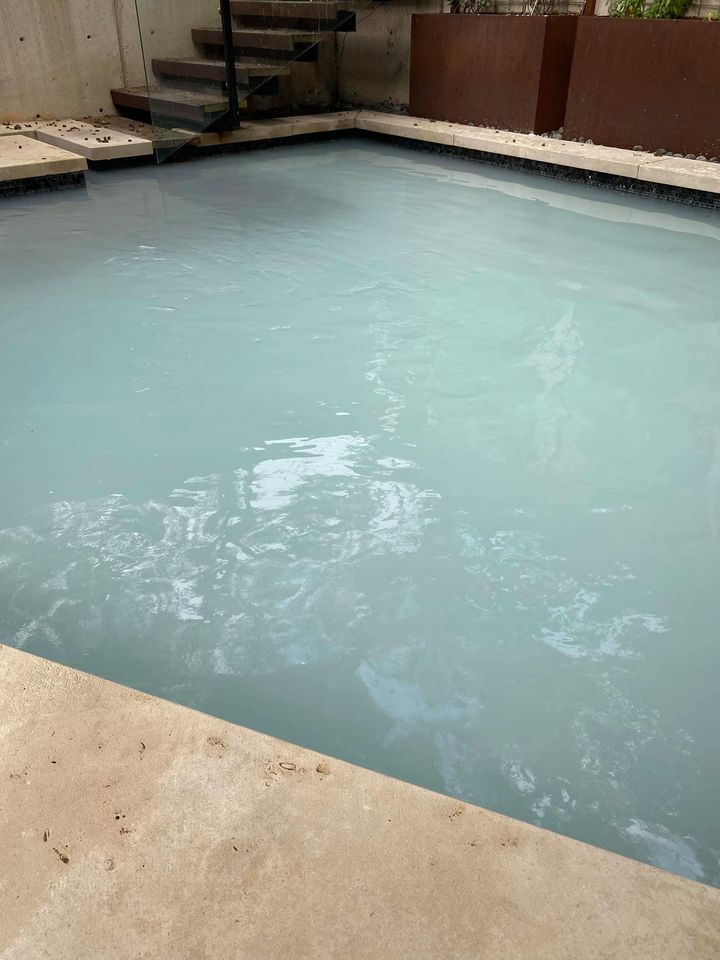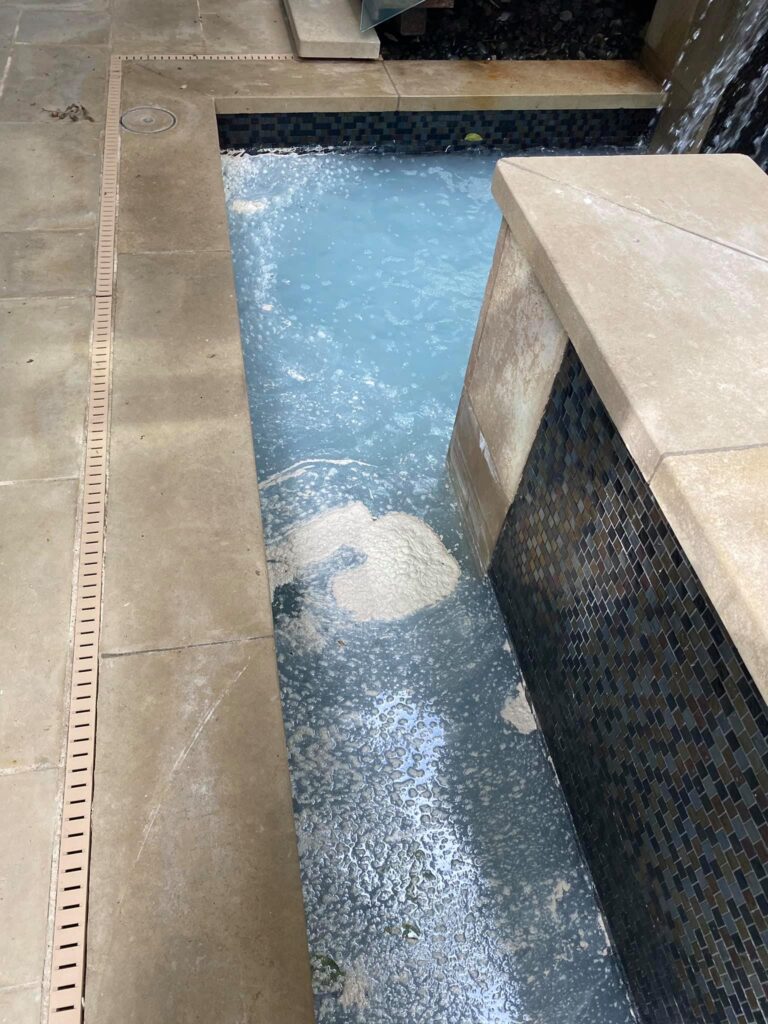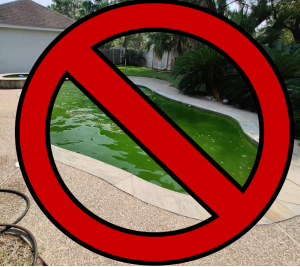Whether it is by accident or the act of vandals, discovering paint dumped into a swimming pool is extremely disheartening. This is the intent of the crime in the case of malice, and your property owner is going to feel violated. You’ll likely want to jump right into treatment, but before you start cleaning paint spilled in a pool, there are a couple of things you’ll want to ensure your customer has done that they may not have thought of.
[responsivevoice_button voice=”UK English Male” buttontext=”Listen to Post”]

This is a crime scene, so treat it like one
- Don’t clean or touch anything.
- Call the police.
- Your customer will want to file a police report.
- Document the damage.
- Take photographs of the swimming pool and any paint on the deck, water features, patio furniture, etc.
- If paint cans or any other evidence has been left behind, take photos of those as well.
- Have them contact their insurance company.
- Vandalism is one of the standard perils covered by most homeowner’s insurance policies.
- Check to see what additional information they may require.

Go Gators!
Most of you guys already know that I covered Alachua county in Florida when I had my service company. I did dip a little into both Levy and Marion counties as well. Student housing facilities in Gainesville made up the majority of my commercial customers. So yeah, they could be rough at times.
September each year was interesting. This is when all the new freshmen away from home for the first time would test their freedom. Okay, not all, but a few would get carried away and make taking care of the pools at those facilities slightly more memorable.

Orange and Blue makes Brown
It was either the last week of September or the first week of October, I don’t exactly recall, but it was the Monday after homecoming. I was cleaning one of my residential customer’s pools when I got the call from one of my community association customers.
“Rudy, you got to get out here as quick as you can. A couple of our residents used paint and tried to dye the pool, both orange and blue at the same time.”

Don’t Drain the Pool!
This may be your first instinct but hold that thought. If you drain that pool, the paint will coat the walls on the way down as the level drops. Now you have an entirely different type of mess – plaster walls and floor with a tint of blotchy whatever the futz that color was.
The other problem with draining is the threat of that thing coming out of the ground. Water at 8.33 lbs per gallon is heavy. A 16 x 30 pool holds 168,682.5 pounds of water. If the groundwater level is high and you remove all of that weight, there is a good chance that sucker can pop up. Now, this is something that homeowners insurance is not likely to cover. General liability insurance doesn’t typically cover this either.
You should not remove the water from a pool unless you are a licensed (if required) and insured (to include pop-up coverage) pool professional with knowledge of groundwater tables and wellpoints.
Similar article How and When to Install Wellpoints
Remediation steps
- Clean or backwash filter thoroughly.
- Add 40 oz of Pool First Aid or similar enzyme product rated for treatment of vandalized water.
- Run pump/filter 24 hours per day during the process.
- Clean or backwash filter as required.
- Pressure side filter with single gauge: when pressure reads 8 to 10 psi above clean running pressure.
- Pressure side filter with two gauges: when the pressure differential of influent and effluent gauges is 8 to 10 psi.
- Vacuum filter: when vacuum gauge reads greater than 8 in Hg (mercury).
- Repeat dose every 48 hours until the pool water is crystal clear.
Photos of paint vandalism courtesy of Chris Higgins of Black Dog Pools, Austin Texas







Does it ruin the filter grids?
Great question! as long as you don’t let them dry before a thorough cleaning you should be okay.
Thank you Rudy as always you are fantastic. One of our pools had a small amount of paint in it. New build and men were still painting on pool house. The next day we noticed someone had broke in and spread paint in the pool and it had an oily film on top of the water and we were told to use tennis balls to soak it up. It did work wonderfully and of course had to clean filters and scrub walls. Saved by the tennis balls. Would have loved to know about the product you told us about.
Tennis balls!? That’s awesome. Happy for you that it was only the film across the surface. Vandals are something else – I just don’t get some people. Ugh! Question for you – How many tennis balls did it take?
Why would you choose not to Floc and Vacuum to Waste in this instance?
Great question and a fantastic thought! Aluminum sulfate is commonly used in water-based paint manufacturing facilities to treat wastewater to be reused for manufacturing. It is also used in conjunction with electrochemical oxidation to prepare wastewater from paint manufacturing facilities to discharge into the environment. I am unaware of the condition of the walls of the containment tank after the process – keep in mind the goal is not a ‘pretty pool’ in this scenario. After that, I speculate – we know that aluminum hydroxide, the actual floc from aluminum sulfate (alum), is used in dyeing and printing cloth to help the pigment adhere. Though I have not tried alum for a paint spill in a pool, I suppose my unfounded fear would be that the alum increases the risk of pigment adhering to plaster. I’ll have to try it one day to say for certain.